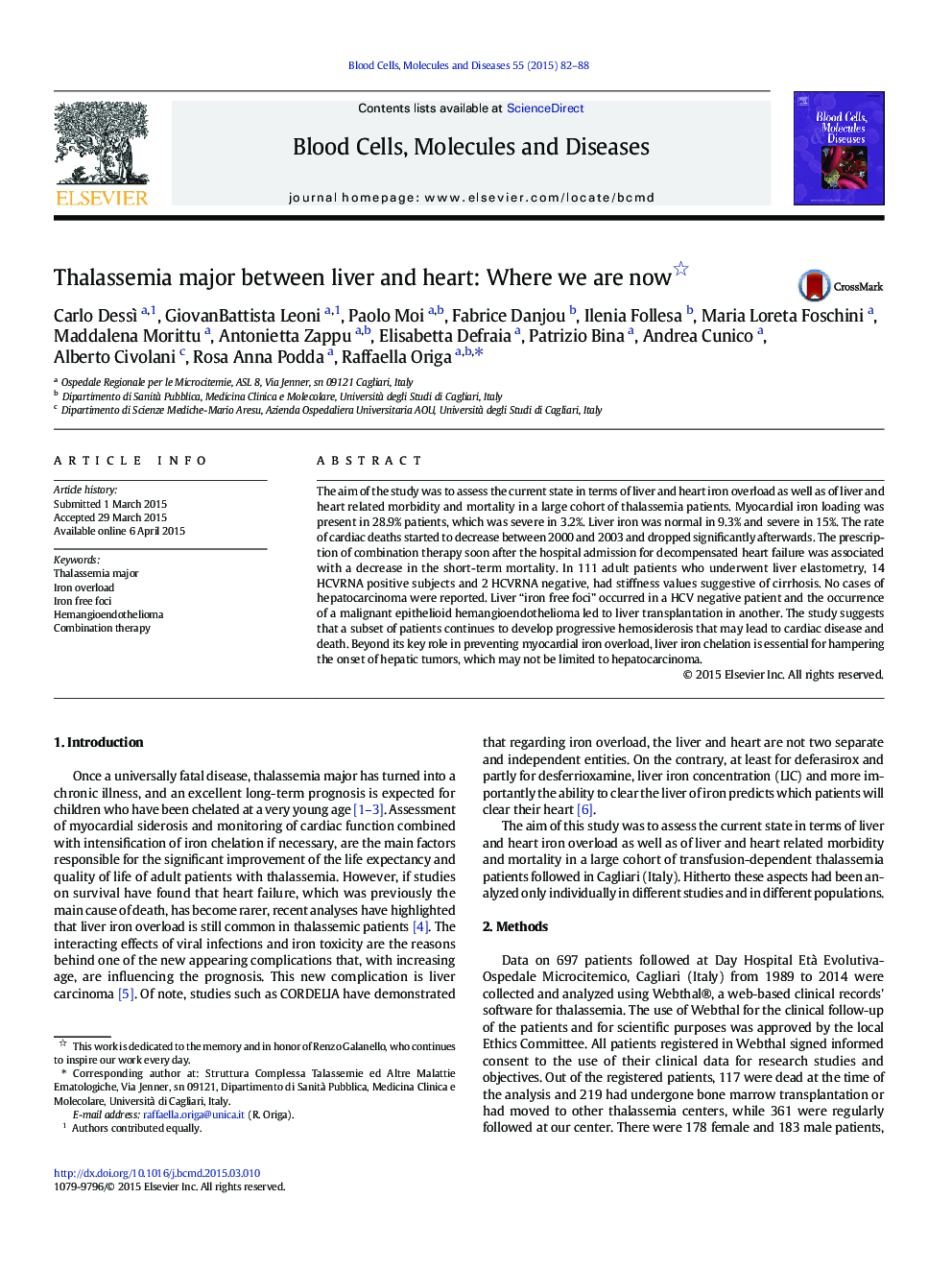| Article ID | Journal | Published Year | Pages | File Type |
|---|---|---|---|---|
| 2827078 | Blood Cells, Molecules, and Diseases | 2015 | 7 Pages |
The aim of the study was to assess the current state in terms of liver and heart iron overload as well as of liver and heart related morbidity and mortality in a large cohort of thalassemia patients. Myocardial iron loading was present in 28.9% patients, which was severe in 3.2%. Liver iron was normal in 9.3% and severe in 15%. The rate of cardiac deaths started to decrease between 2000 and 2003 and dropped significantly afterwards. The prescription of combination therapy soon after the hospital admission for decompensated heart failure was associated with a decrease in the short-term mortality. In 111 adult patients who underwent liver elastometry, 14 HCVRNA positive subjects and 2 HCVRNA negative, had stiffness values suggestive of cirrhosis. No cases of hepatocarcinoma were reported. Liver “iron free foci” occurred in a HCV negative patient and the occurrence of a malignant epithelioid hemangioendothelioma led to liver transplantation in another. The study suggests that a subset of patients continues to develop progressive hemosiderosis that may lead to cardiac disease and death. Beyond its key role in preventing myocardial iron overload, liver iron chelation is essential for hampering the onset of hepatic tumors, which may not be limited to hepatocarcinoma.
